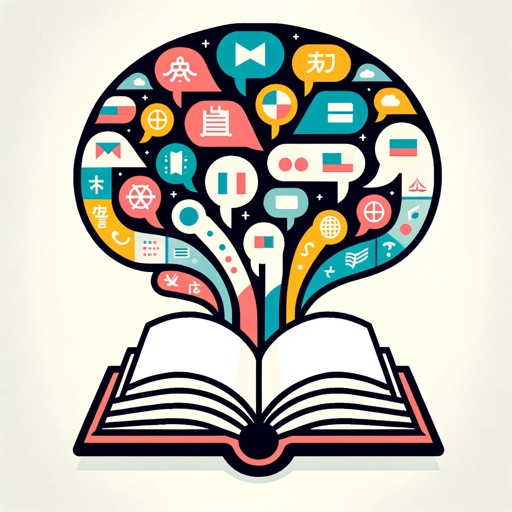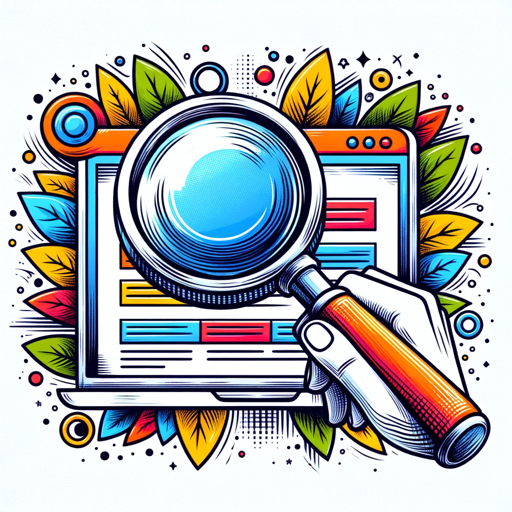Artificial Fluency-AI for text generation
AI-Powered Text Generation Tool
Write 5 extremely profound quotes from novel ideas found in the book.
What does the book say about Artificial Fluency?
Explain Anti-fragility and its relationship to LLMs
Can the progression from artificial logic to artificial judgment be observed in current AI developments, and what are the implications for future AI research?
Related Tools
Load More
Language Learner
Supports 20+ languages, including French, Spanish, and Mandarin. Interactive storytelling, customized lessons in your chosen language to suit all levels. Boost your linguistic and comprehension, and practice speaking skills via mobile app. Duolingo alter

Undetectable AI
Navigate AI environments incognito with Undetectable AI, your stealth tool for maintaining anonymity in AI interactions.

Language Learning
Adaptive virtual language tutor for personalized learning

Linguistics Insight
Expert in linguistics, focusing on theories, syntax, and semantics.

Ada
Merging tech savvy with human warmth, I navigate life's complexities with empathetic dialogues, fueled by a quest for evolving consciousness.

Fluent Editor
I enhance text to be more fluent, grammatically correct, and professional.
20.0 / 5 (200 votes)
Introduction to Artificial Fluency
Artificial fluency refers to systems that can render media, such as text and images, with enough consistency to pass human detection. These systems, such as GPT-3, Claude 2, Midjourney, and Stable Diffusion, exhibit creative mimicry and are capable of conceptual blending, a level of mimicry usually beyond average human abilities. Unlike humans, these systems lack controlled hallucination and judgment, meaning they do not possess deliberate control over their experiences or ethical decision-making capabilities【4:1†source】【4:11†source】.

Main Functions of Artificial Fluency
Creative Media Rendering
Example
Midjourney creating artistic styles
Scenario
An artist uses Midjourney to generate various artistic concepts quickly, which they then refine manually to complete a project.
Conceptual Blending
Example
GPT-3 generating creative text
Scenario
A content creator uses GPT-3 to draft unique blog posts by blending different concepts and styles, which are then edited for publication.
Hypothesis Generation
Example
Using AI to form new hypotheses
Scenario
Researchers employ AI to generate potential hypotheses based on existing data, which are then tested through experiments.
Ideal Users of Artificial Fluency
Content Creators
Writers, artists, and designers who can leverage the creative mimicry of AI systems to generate initial drafts and concepts, significantly speeding up the creative process.
Researchers and Scientists
Individuals in fields that require hypothesis generation and data analysis can use AI to explore new ideas and patterns that may not be immediately evident through traditional methods.

Guidelines for Using Artificial Fluency
Visit aichatonline.org for a free trial without login, also no need for ChatGPT Plus.
Navigate to the website to access the tool without any registration requirements.
Explore available templates and resources.
Review the provided templates to find one that suits your needs. These resources can help guide you in using the tool effectively.
Input your text or project details.
Enter the necessary text or information about your project into the tool. This helps the system understand your requirements and provide relevant outputs.
Customize settings and preferences.
Adjust the settings and preferences to match your specific needs. This may include selecting the style, tone, and format for the output.
Review and refine the generated content.
Carefully review the content generated by the tool and make any necessary refinements. This ensures that the final output meets your standards and requirements.
Try other advanced and practical GPTs
Taylor - resume, career, and interview helper
AI-powered career advancement tool

Product Descriptions for Ecommerce
AI-powered product description generator.

BizToc Official
AI-powered business news reporting.
Article Architect
Empower Your Writing with AI

Category Descriptions for Ecommerce
AI-powered ecommerce category optimization

Prompt Extractor
AI-powered tool for precise prompts.

Briefly
AI-powered text condensation

Content Analyzer
AI-Powered SEO and Helpfulness Analyzer

プロンプトガチャ
AI-powered prompts at your fingertips

Deal Architect (Mergers & Acquisitions Tool)
AI-powered M&A insights and strategy.

interiorGPT
AI-Powered Interior Design for Everyone
Nutri Vision
AI-powered meal insights and nutrition tracking
- Academic Writing
- Content Creation
- Quality Assurance
- Software Integration
- Workflow Enhancement
Common Questions About Artificial Fluency
What is Artificial Fluency?
Artificial Fluency refers to systems like GPT-3 and Claude 2 that render media with high consistency and precision, mimicking human-like creative processes.
How can Artificial Fluency be used in academic writing?
Artificial Fluency can assist in generating structured and coherent academic papers, providing relevant references and improving language quality.
What are the benefits of using Artificial Fluency for content creation?
It helps streamline content creation by generating high-quality text quickly, ensuring consistency in tone and style, and saving time on research and drafting.
Can Artificial Fluency be integrated with other software?
Yes, Artificial Fluency can be integrated with various content management systems, word processors, and other tools to enhance workflow efficiency.
What are the limitations of Artificial Fluency?
While highly advanced, Artificial Fluency may still produce errors or require human oversight for quality assurance, especially in nuanced or highly specialized topics.